Delta Lake table optimization
Transform and Analyze Data with Microsoft Fabric

Luis Silva
Solution Architect - Data & AI
What is Delta Lake?
- Open source storage layer for lakehouses
- ACID transactions, metadata handling and versioning
- Fabric uses Delta Lake table format (Parquet) as the standard
- Interoperability across Fabric experiences

Table maintenance
- Keep delta tables in shape
- Table maintenance operations:
- Optimize
- V-Order
- Vacuum
Optimize
- Consolidate multiple small Parquet files into a large file
- Ideal file size between 128MB and 1GB
- Improve compression and distribution, leading to efficient reads
- Recommended to optimize after loading large tables
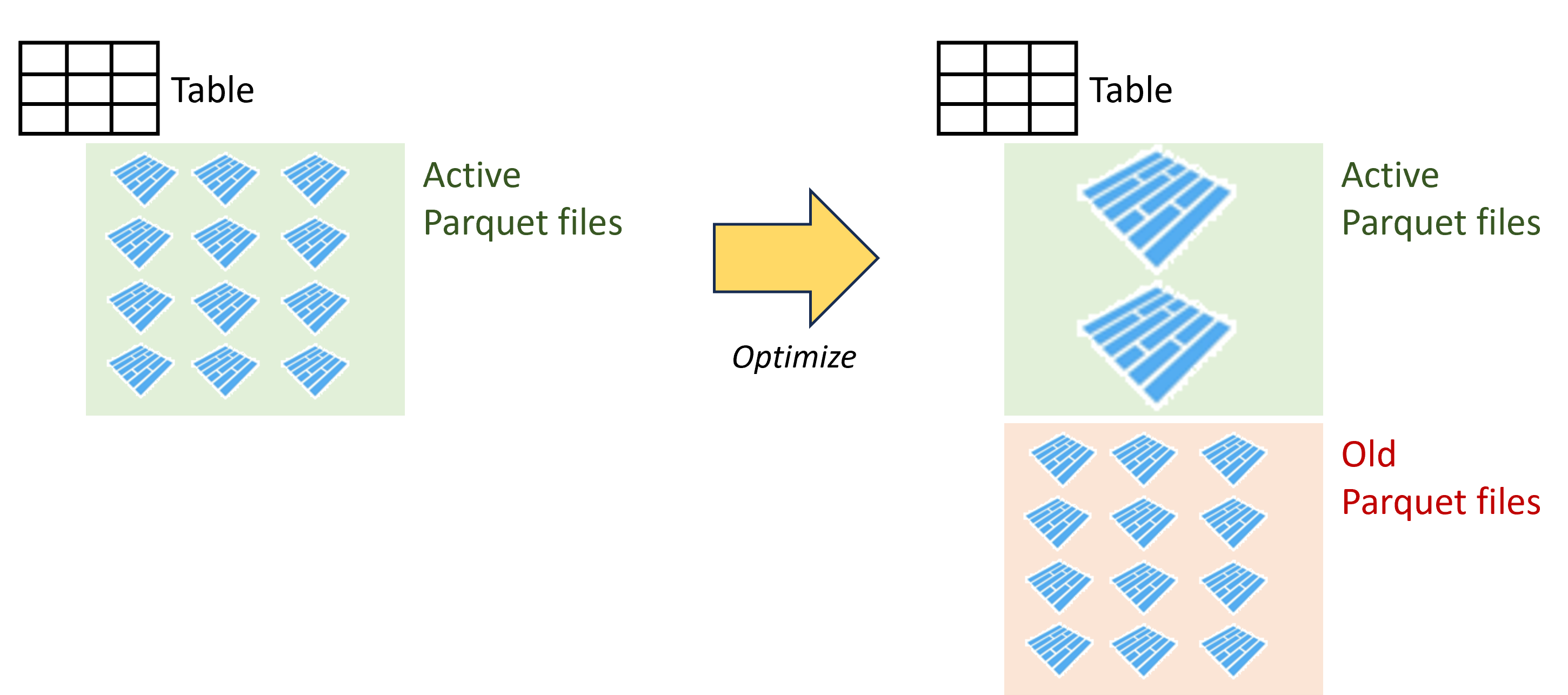
Optimize
- Consolidate multiple small Parquet files into a large file
- Ideal file size between 128MB and 1GB
- Improve compression and distribution, leading to efficient reads
- Recommended to optimize after loading large tables

Running the Optimize command from Lakehouse explorer
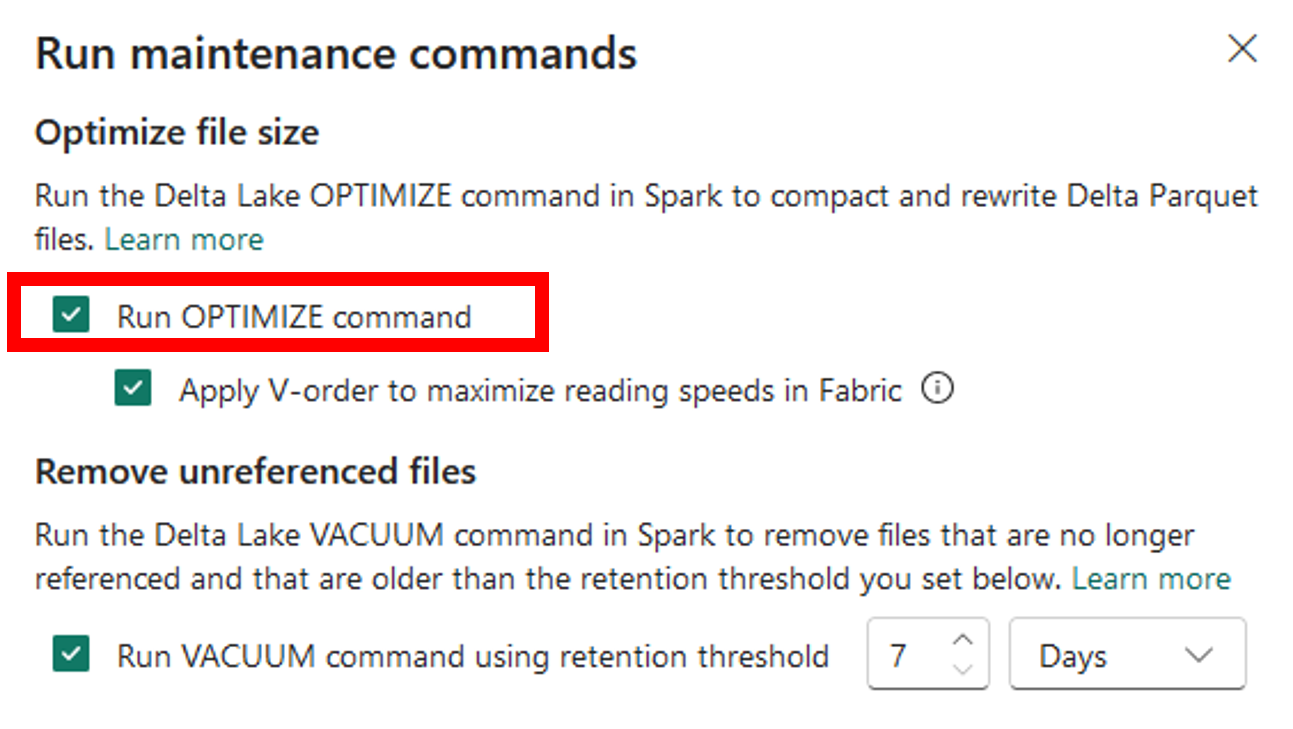
Running the Optimize command in Spark SQL
%%sql
OPTIMIZE <lakehouse>.<table>;
Running the Optimize command in PySpark
from delta.tables import DeltaTable
dt = DeltaTable.forPath( spark, "Tables/<table>" )
dt.optimize().executeCompaction()
V-Order
- Special optimization applied when writing Parquet files
- Enabled by default
Applying V-Order from Lakehouse explorer
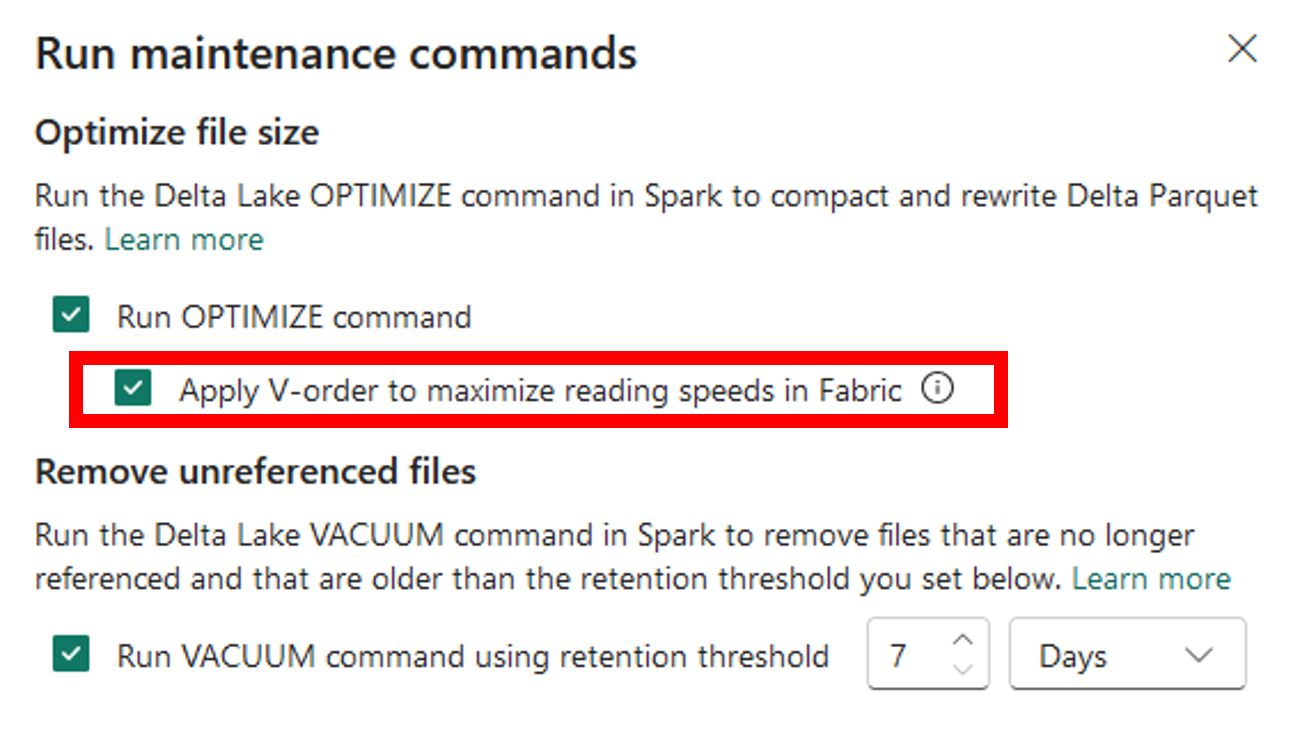
Controlling V-Order writing in Apache Spark session
Enable V-Order for the session
%%sql SET spark.sql.parquet.vorder.enabled=TRUEDisable V-Order for the session
%%sql SET spark.sql.parquet.vorder.enabled=FALSE
Applying V-Order when optimizing a table
%%sql
OPTIMIZE <table|fileOrFolderPath> VORDER;
Vacuum
- Remove older files that are no longer needed and that are older than the retention threshold
- Reduce cloud storage costs
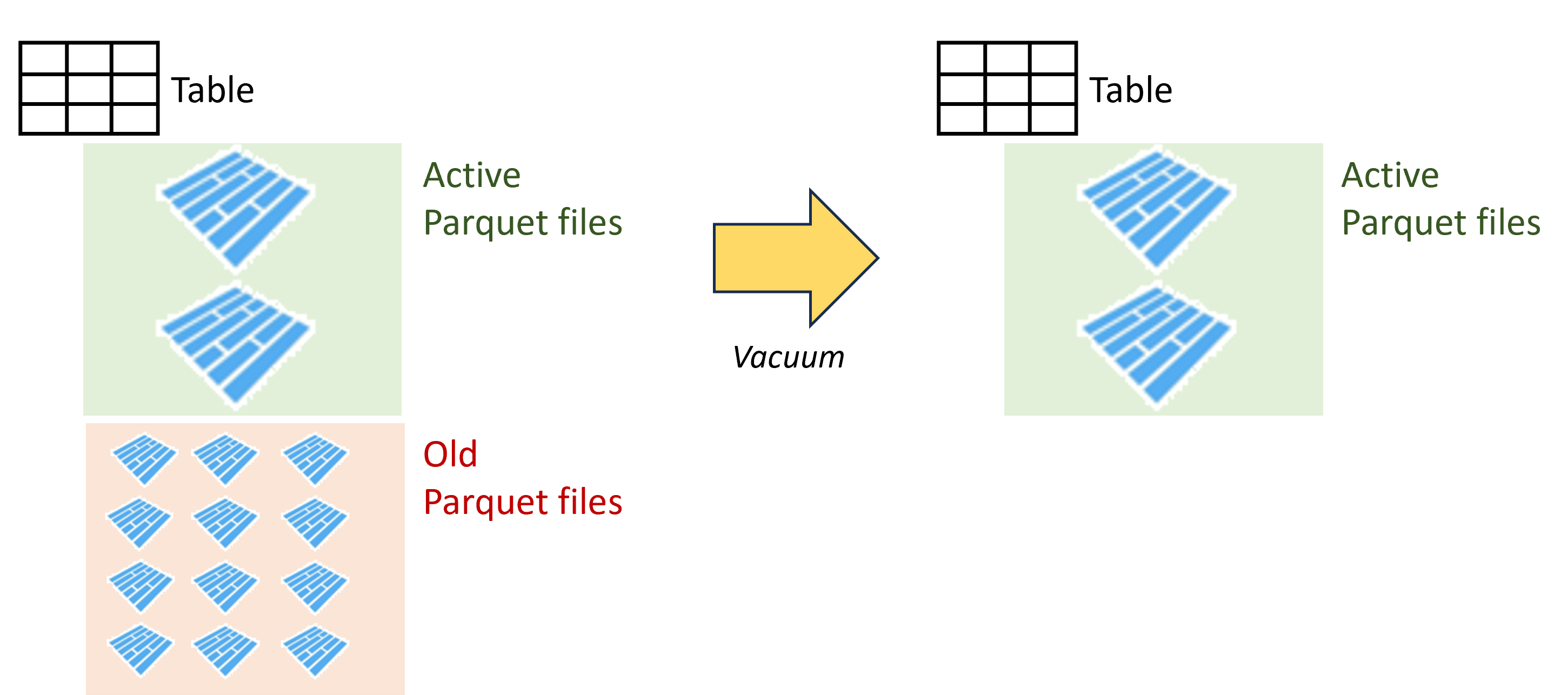
Vacuum
- Remove older files that are no longer needed and that are older than the retention threshold
- Reduce cloud storage costs

Running Vacuum from Lakehouse explorer
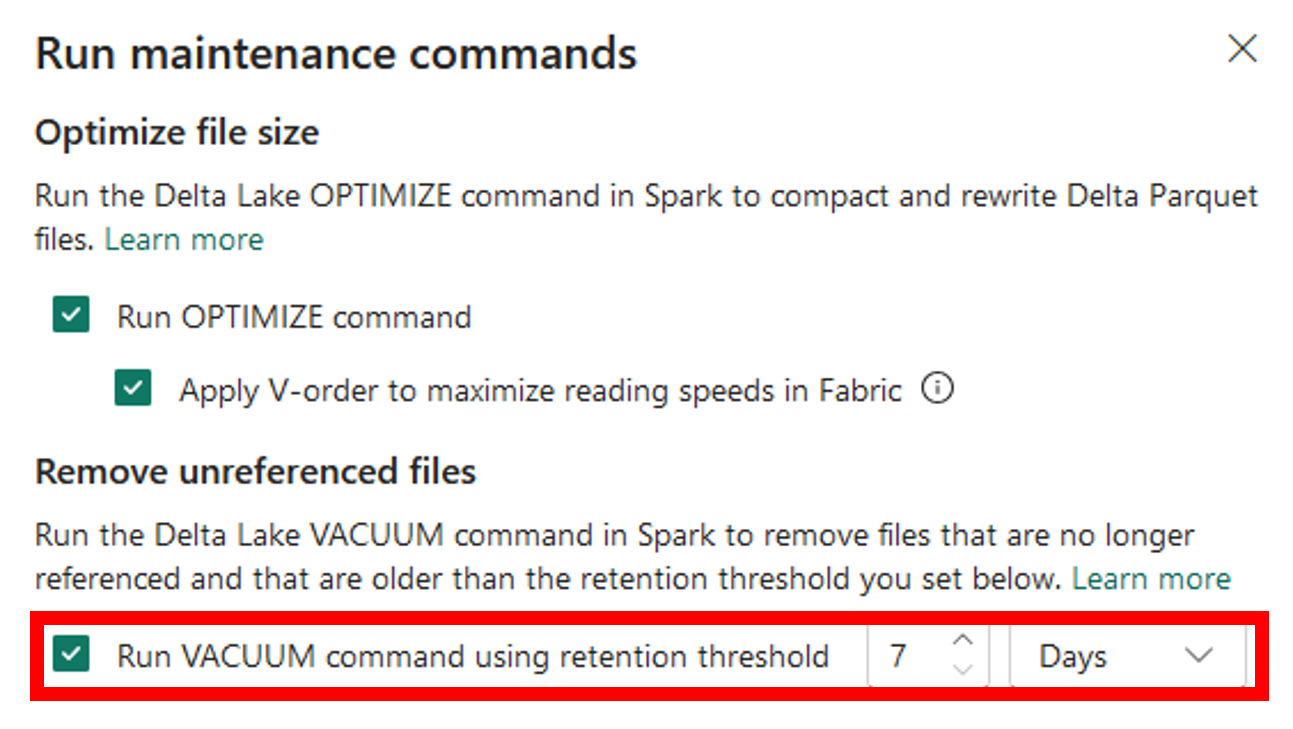
Let's practice!
Transform and Analyze Data with Microsoft Fabric

